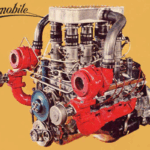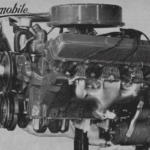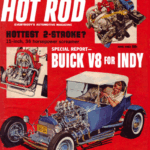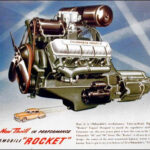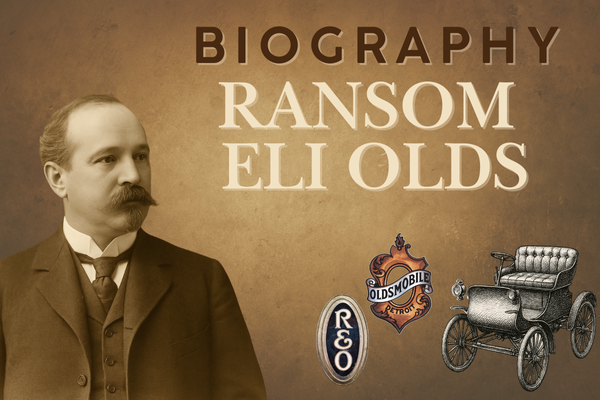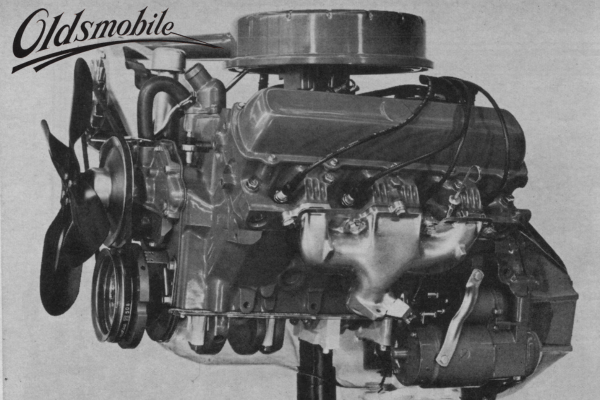In 1956, Bendix introduced “Electrojector”, a true multipoint electronic fuel injection system. In 1958 it would become optional on 1958 performance models of automobiles built by Chrysler Corporation.
Bendix, which had extensive experience with fuel injection systems used on Korean-War-era aircraft, commenced work on its Electrojector design in 1951. In many respects, it was far ahead of its time, not only with the use of an analog computer to regulate fuel delivery but also because it was a synchronous injection system with each squirt of fuel precisely timed to the opening of the intake valve for all eight cylinders.
The key components were eight solenoid-type injectors, a common rail supply of fuel at a regulated 20 psi, several sensors to measure key engine parameters, a commutator added to the ignition distributor to route electrical signals to each injector, and a compact “brain box” to calculate and generate the electric signals needed to operate the injectors. The pulse width of these signals determined how long each injector remained open during each combustion cycle.
Bob Rodger and his Chrysler engineering staff, along with engineers of Bendix Corporation’s Automotive Electronics Division, began studying the possibility. In February 1957 a Chrysler 300C hardtop was outfitted with Bendix EFI (Electronic Fuel Injection) unit and then tested by the factory.
The trial outcome was favorable because on Sept. 28, 1957, the EFI “Electrojector” was offered as an option on Chrysler Corporation’s sport models – 300, Adventurer, D500, and Fury. Cars for whom the option was selected were dual 4-barrel cars which were sent to the DeSoto plant on Warren Ave. There the production-line dual quad carburetors were removed and the EFI manifold and injection “brain box” (computer) was installed. An electric fuel pump was placed in the tank, and a 40-amp generator also was part of the package. Side emblems were removed and replaced with new ones proudly declaring “FUEL INJECTION”, designed and specific to each brand.
The superintendent of the DeSoto plant has said that between Jan. 20 and July 15, 1958, 35 Chrysler 300Ds were equipped with fuel injection, along with 12 Dodges, 5 DeSotos, and 2 Plymouths. These figures don’t agree with the microfiches, which show 16 EFI-equipped 300s. Several of them have survived with their replacement carbs, and one 300D has come down the years to us with its EFI intact as has a DeSoto Adventurer.
A $600+ option – put the owner on the cutting edge of progress. But the owners were soon disappointed. Bendix EFI while complicated, failed more due to the infancy of small computers than to anything else.
It was later learned that two factors impacted its function: 1) The capacitors in the computer were paper wrapped and the constant heat, cold and humidity changes caused them to fail, and 2) the system use amplitude modulation to control the signals to the injectors and powerful AM radio stations overrode the instructions. (AM radio was the key means of commercial radio transmissions in the 50s-60s).
If the customer complained, they were instructed to take their car back to the dealer for re-installation of the twin carburetors it had been born with. Chrysler never did an official EFI recall.
Later, the system would be licensed to Bosch, who by 1965 was able to make roadworthy in various German manufacturers such as Bosch D-Jetronic.
Electrojector – Bendix Electronic Fuel Injection System Paper
This paper was submitted in January 1957 – prior to the testing in a live model of a 1957 Chrysler 300C. That encouraged Chrysler to offer it as an option in 1958.





